The Cornell Lab Bird Academy › Discussion Groups › Nature Journaling and Field Sketching › Jump Right in!
-
I was a bit intimidated by the warbler so I focused on the branch first which turned out to be a mistake becasue then I got my spacing off on the bird. But starting with the branch did make me feel more relaxed when it came time to draw in the warbler. I noticed that all of the birds toes don't wrap around the branch, I wonder if this is because it was mid movement or if this is typical of warblers when they perch. I wouldn't have noticed that at all if I wasn't drawing it. This would make a huge difference if journaling in the field because it led to questions that I could then attempt to answer with further observation.
-
1. I enjoyed it! I followed the suggestion of the young man who was last to present his journal: he said it helped him to think of a bird in terms of rounded shapes, a circle for the head, an egg or oval for the body etc. That made things easier. I still haven't colored my warbler though because I'm waiting for my colored pencils to arrive in the mail!
2. I don't know that I'd have noticed the twig on which the bird was perched. This might give a clue in future as to which shrub or understory tree the bird liked to frequent which would be an important clue to habitat preferences. -
I don't think I would've been able to draw the bird in real life because I would've been too concerned it would move. It was easier from a photograph because there's no movement. I would've missed details like the shape of the beak and the different layers the wings have. It has always been challenging for me to draw the shape of a birds head and then placing the eye in the right spot. I would've missed how the feet wrap around the stem. I don't think I would've remembered the details if I have not drawn it. I think drawing certainly makes you pay attention to things you may not think about if you're just looking at a picture.

-
1. I felt okay about drawing the photo because it gave me something to focus on, while some of my art tends to be a bit more free hand. For me, trying to draw the bird and the sticks at first was a bit hard as I tried to get the layout right, but as time went on it got more fun as I tried to put my own little art spin on the drawing once I was happy with the outline. The leaves were pretty easy and fun to do.
2. Maybe if I were to told to focus on only the bird, I might not have noticed the leaves and moss on the sticks. The same could be said if I were to focus on the stick, I might not have noticed the streaking on the bird's chest. I feel what you notice as you draw is important to journaling or just art in general because it lets you notice and appreciate the little things and can help you make a more interesting drawing or connect more with nature. -

Easy part was the bird was holding still! Challenge was not focusing too much on non-essential details. -
I felt pretty nervous and hesitant starting this drawing, but as it started to come together I felt a bit more optimistic and open to possibility. I found the wing very challenging to draw, as well as capturing the overall shape of the bird. I may not have noticed the striped details if I hadn't been asked to draw it. It'll be very interesting to try to capture details while nature journaling!
-
I was nervous about drawing from the photo because I am not very good at drawing. Making the bird look like the photo was challenging, getting the details down. I may not have noticed the details on the wings if I did not draw it. Drawing definitely makes me pay attention to the details of the subject I am drawing.
-
 1. I liked that with a photograph I could take my time and focus on the subject. Getting proportions correct was a bit difficult. I also feel I attempt to put in details that may not be necessary. I I were not drawing it I don’t think I would have noticed how the wing feathers were almost had a striped pattern. I am not so sure this would have made a difference in nature journaling.
1. I liked that with a photograph I could take my time and focus on the subject. Getting proportions correct was a bit difficult. I also feel I attempt to put in details that may not be necessary. I I were not drawing it I don’t think I would have noticed how the wing feathers were almost had a striped pattern. I am not so sure this would have made a difference in nature journaling. -

-

I liked this excercise. I can't wait to see how much I can improve my drawing skills. 1. I don't have a sketchbook yet, but I could't wait until monday! I didn't use colours, because I wanted to try drawing on this one. I believe it will be an important skill after all. The propotions aren't exactly right and I tend to pay too much attention to unimportant details. The form of the bird and it's head were quite difficult to get right. 2. The more I draw, the more details I see. It depends of the purpose of the drawing, how important the details are. When drawing a lively bird it's essential to notice the bigger picture, too. The 'model' won't pose for long! -

-
I felt a little nervous, but enjoyed seeing if I could make the drawing look like the photo. I notices all of the markings on the bird and the branch. I noticed the way his feet wrapped around the branch, the sharpness of his beak and where his eye was in relation to his beak and within his head.
-
I’m the first to admit my artistic skills are rubbish. I’m more a bird watcher and photographer. I get too focused on the details and it took me awhile to get the basic outline and posture the way I wanted them. The beak, legs, and feet were the hardest and I still didn’t get them the way I’d hoped. Watercolor pens can’t make the color gradients I see so I’ll try to use watercolor paint which absolutely terrifies me for some reason. I actually enjoyed the drawing process am I’m not too unhappy with the outcome; better than I thought I could do.

-
My drawing isn’t as good as the ones posted so far, but I’m still slightly impressed with myself. It's not a disaster and actually looks like a bird, maybe even a warbler. It was not as hard as I thought it would be. The hardest part was trying to get the eye and beak right, which I thought at first would be the easiest. I erased that part several times and am still not happy with it. After I finished and looked again at the photo, I was amazed at the details I saw, which I didn’t notice at first — the brown stripes on the chest, the very fine black lines along the wings, and the subtle color changes on the head. This was fun and I’m tempted to try to color it, but I will leave it alone for now while I feel OK about it.
-

-

-
image staying still was a big help and can get a photo that you may not have time to draw
drawing is all new so all a challenge
drawing you can emphasis the important markers -
Drawing the photo took a lot less time and effort than all the time and effort I spent procrastinating about it! I really enjoyed the experience and found it calming, wasn't as hard as I thought it might be. Paid a lot of attention to trying to capture the small details. Looking forward to the next steps in this process!
-
1. Liked drawing from photo b/c bird didn't hop around! Could see details.
2. Everything! Yes. Hopping birds will be tricky! -

-

-
 I attempted this drawing using color which was harder than I tgiught. Proportion is better but not great.
I attempted this drawing using color which was harder than I tgiught. Proportion is better but not great. -
 Proportion is way off. I hope to get help with that. I really enjoy sketching and would love to get better at it. I pay much more attention to detail and shadows sketching than I do in in looking at a photo, especially in the feathering.
Proportion is way off. I hope to get help with that. I really enjoy sketching and would love to get better at it. I pay much more attention to detail and shadows sketching than I do in in looking at a photo, especially in the feathering. -

-

I haven’t tried to draw in at least 38 years. This was very satisfying, and I like how it drew my attention to the smallest details.
Read More:


 1. I liked that with a photograph I could take my time and focus on the subject. Getting proportions correct was a bit difficult. I also feel I attempt to put in details that may not be necessary. I I were not drawing it I don’t think I would have noticed how the wing feathers were almost had a striped pattern. I am not so sure this would have made a difference in nature journaling.
1. I liked that with a photograph I could take my time and focus on the subject. Getting proportions correct was a bit difficult. I also feel I attempt to put in details that may not be necessary. I I were not drawing it I don’t think I would have noticed how the wing feathers were almost had a striped pattern. I am not so sure this would have made a difference in nature journaling. 
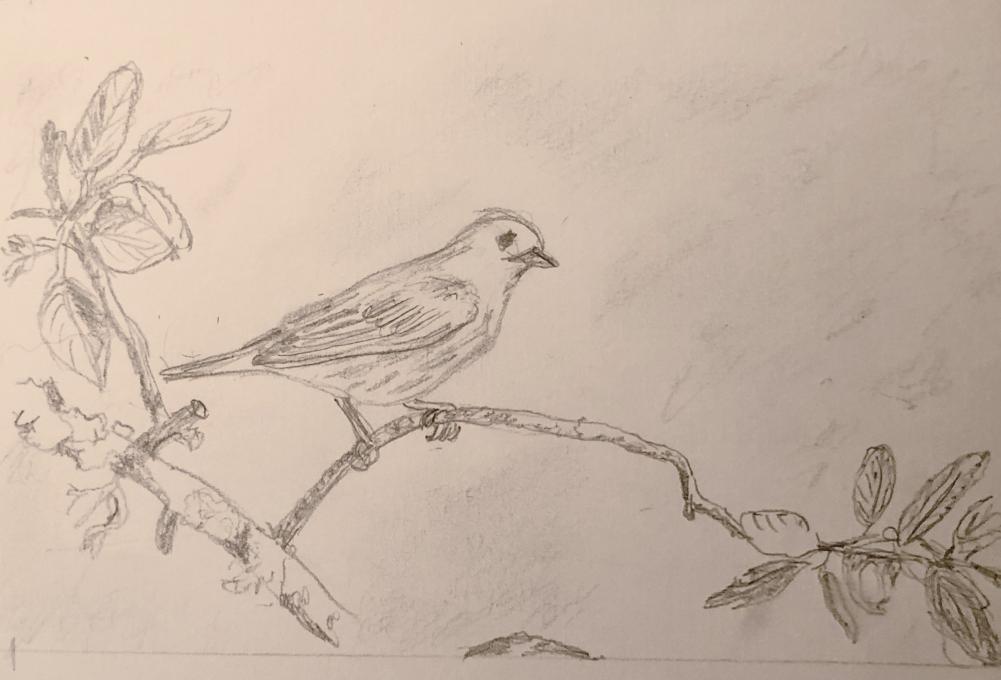
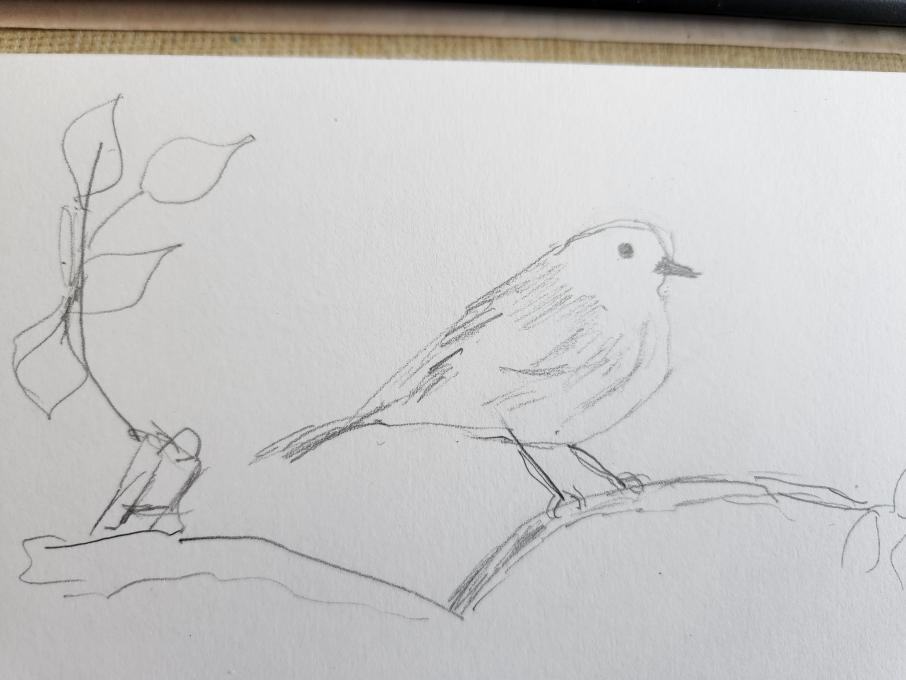



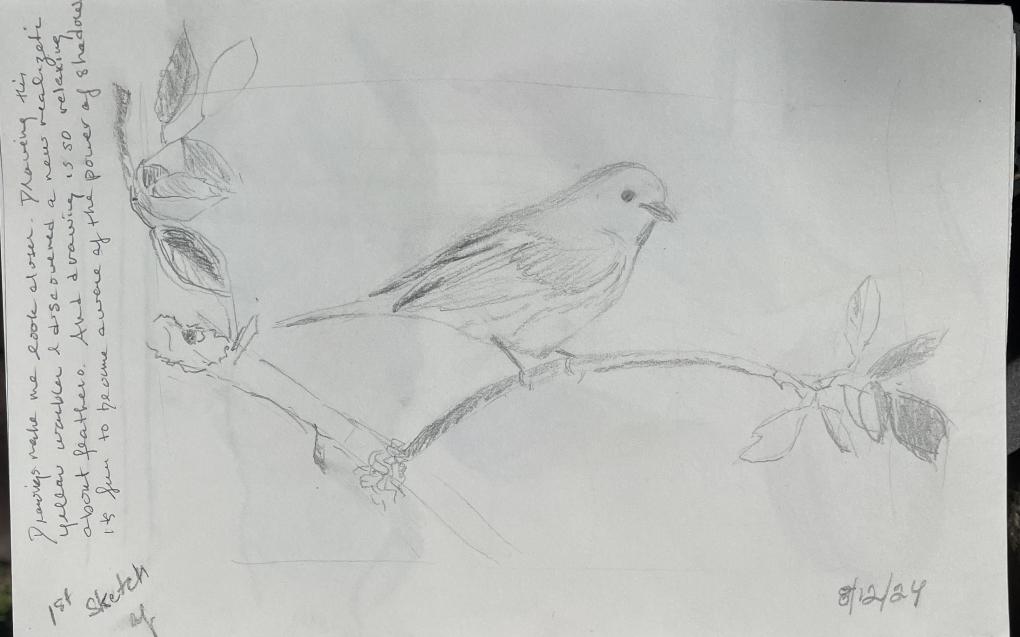

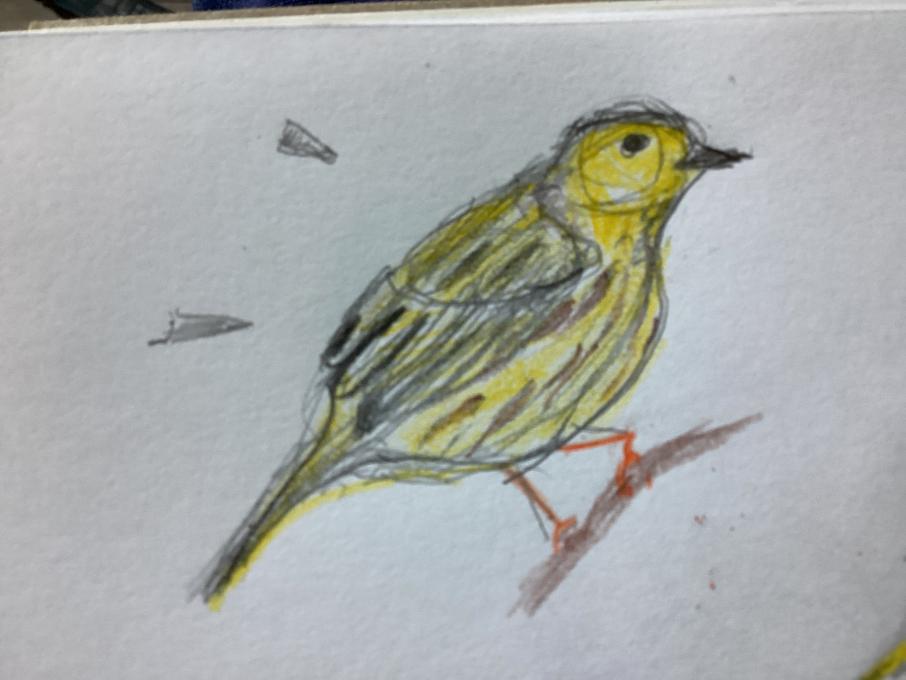 I attempted this drawing using color which was harder than I tgiught. Proportion is better but not great.
I attempted this drawing using color which was harder than I tgiught. Proportion is better but not great. 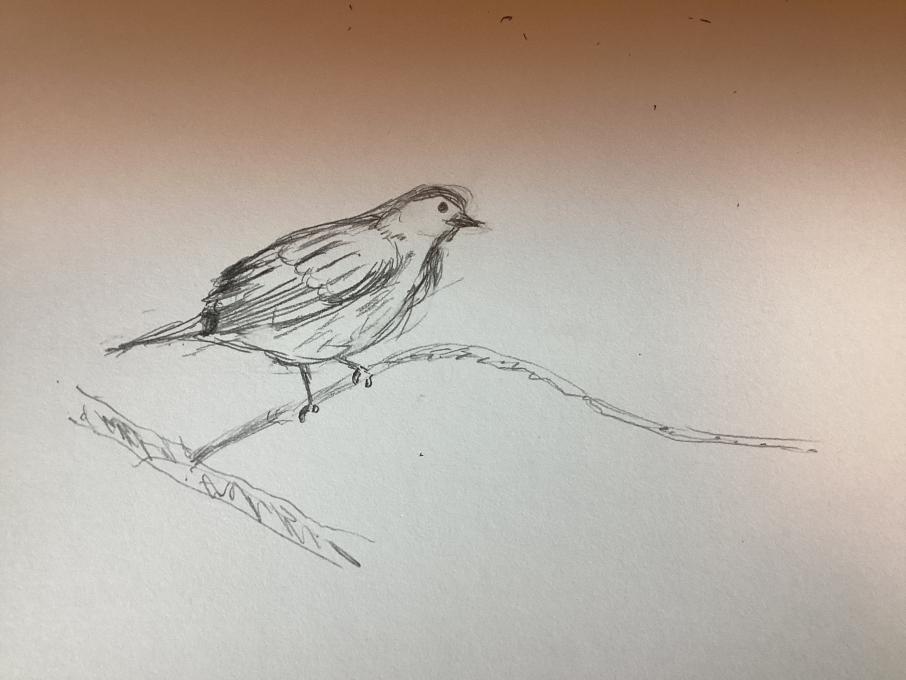 Proportion is way off. I hope to get help with that. I really enjoy sketching and would love to get better at it. I pay much more attention to detail and shadows sketching than I do in in looking at a photo, especially in the feathering.
Proportion is way off. I hope to get help with that. I really enjoy sketching and would love to get better at it. I pay much more attention to detail and shadows sketching than I do in in looking at a photo, especially in the feathering. 
